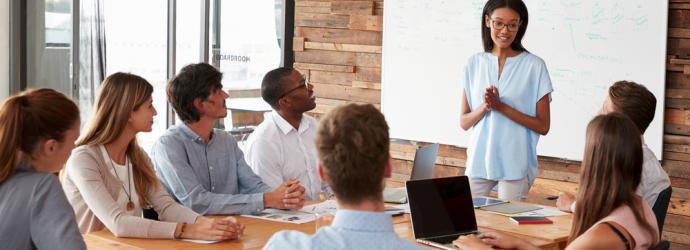
An introduction to teaching learners with physical needs
Teaching learners with physical needs presents a unique set of challenges and opportunities – something we explore in online SEND CPD Unit 13, throughout which we consider how to ensure students with physical needs can thrive academically, socially, and emotionally when we provide truly inclusive, accessible, and supportive environments.
Every individual has a unique set of needs and – like everything else in education – there is no ‘one-size-fits-all’ approach to take. But with that in mind, we know that there are certain areas that should be considered carefully as a starting point, and which should be tailored according to the needs of the specific learner you have in mind:
Adaptions and accessibility
The importance of physical adaptations and accessibility – for example, how classrooms, play areas and other school facilities must be adapted to accommodate a range of physical abilities, and how using assistive technology or providing alternative ways to complete tasks can make a real difference to learners.
Safety
The importance of creating a safe environment – from avoiding trip hazards to ensuring that equipment adjustable seating is used correctly. And because we know safety isn't just physical, great inclusive practice can foster emotional safety and a true sense of belonging within the school community, encouraging social connections, and building the confidence required to participate in both academic and extracurricular activities.
Accommodating changes to routine
Beyond classroom modifications, we need to know how to accommodate different needs within the school day, the importance of flexibility and understanding when medical appointments or therapy sessions fall during school hours, and how to ensure students don’t fall behind as a result.
Communication
Above all, communication between home and school is crucial. Parents, teachers, TAs, therapists, and specialists all play a role in an holistic partnership approach, and clear, open communication is essential to ensure that everyone is aware of the child’s progress, needs, and any challenges that arise.
These themes (and more!) will be explored in our Specialist Spotlight Session on 8 October. It’s a great opportunity to ask for advice from specialists, and to hear about other practitioners’ experiences and share your own insights.
Specialist Spotlight: An introduction to teaching learners with physical needs (Primary)
Join us for a FREE discussion exploring an introduction to teaching learners with physical needs in primary settings.
8 October, 16:00-17:00
Featuring Di Ceasar: Di Ceasar has over 30 years of experience of both mainstream and special education sectors including 10 years as a Governor for a local secondary school. Di is an experienced manager and has contributed to work streams at a local, county, regional and national level to develop provision and policy which contributes to better outcomes for CYP with SEND. Di currently leads Physical Disability and Sensory teams within Gloucestershire’s Advisory Teaching Service, which comprises a range of professionals and services including Specialist Teachers, Occupational Therapists, Speech and Language therapists and specialist roles including Early Years, Mobility and Assistive Technology roles. Di is currently National Chair of pdnet, a national organization representing professionals who work within the physical disability sector.
The discussion will be hosted by Whole School SEND’s National Delivery Coordinator, Caroline Sutton-Reid, and everyone will be encouraged to join in, ask questions and share experiences. As such, content will be responsive but may cover some or all of the following themes:
- The challenges facing learners with physical needs, and how their needs might affect their experience of school or college
- How practice can be adapted to include learners with physical needs, and
- The importance of working closely with learners with physical needs, their families and the range of other professionals who support them.







